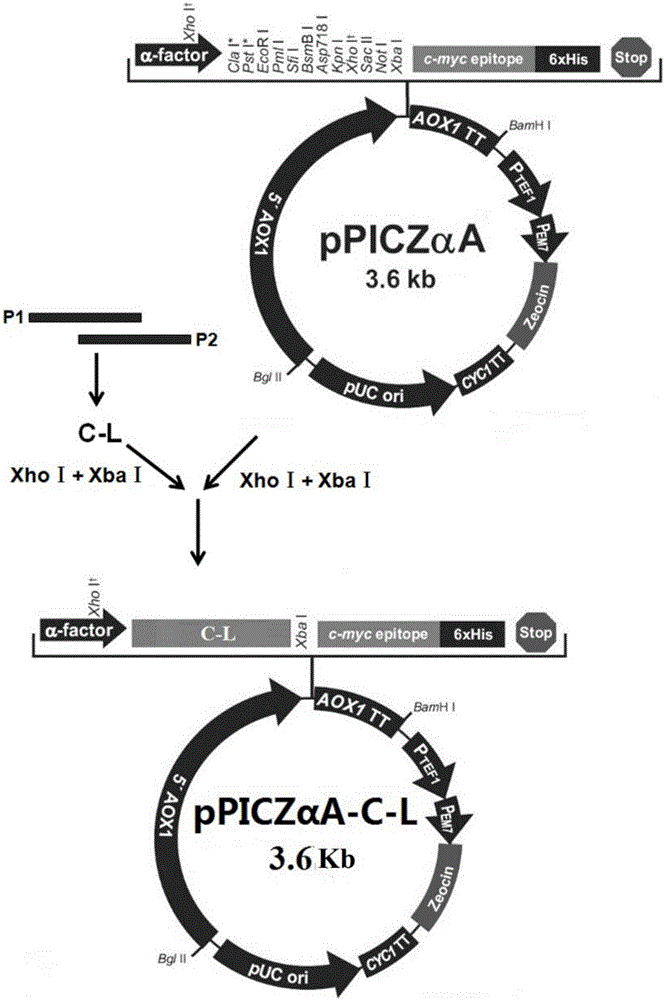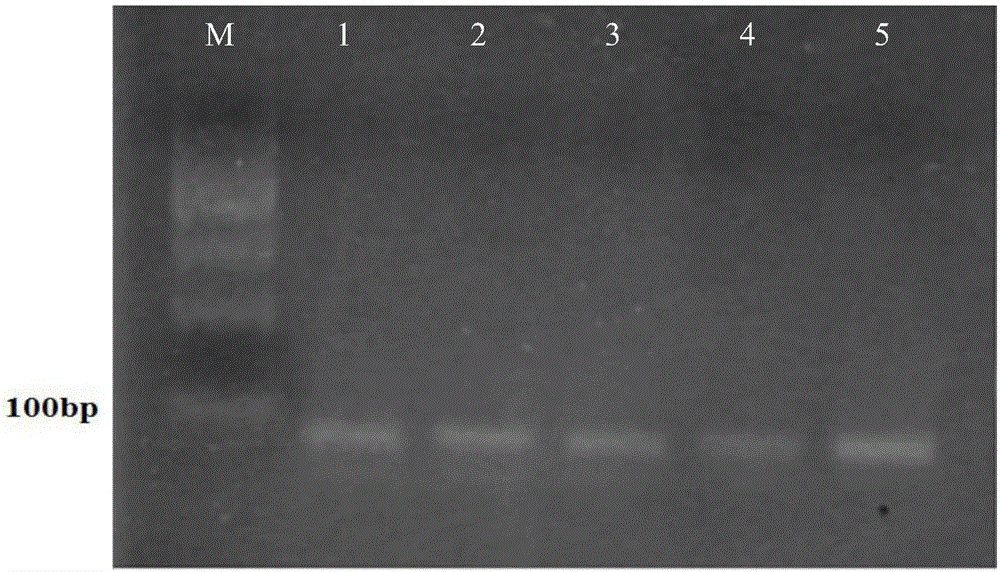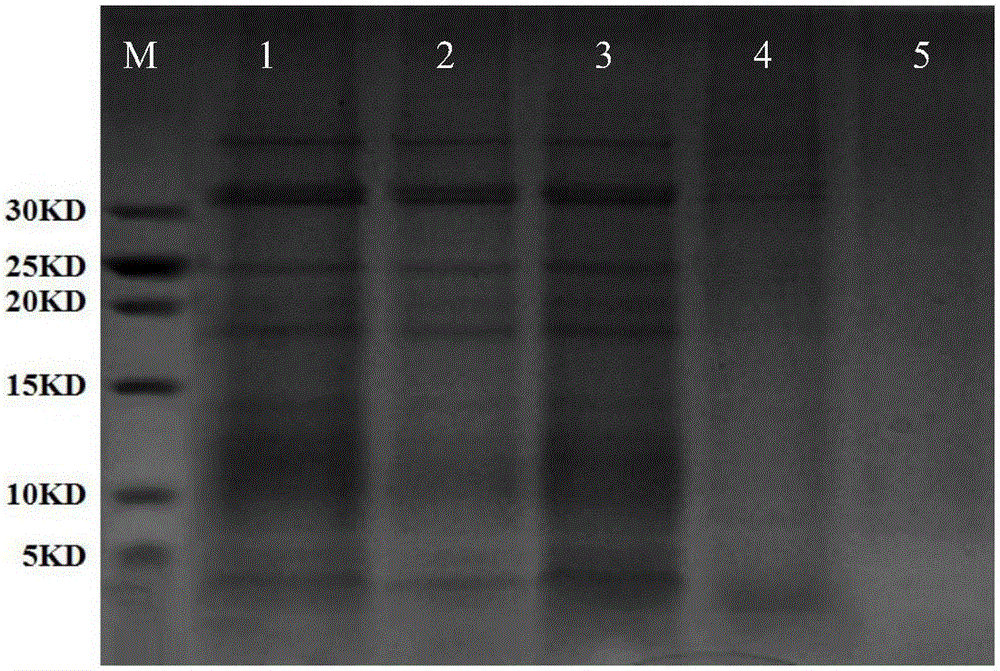Antibacterial and antiviral hybrid peptide as well as preparation method and application thereof
An antiviral and hybrid technology, applied in the field of genetic engineering and biopharmaceuticals, can solve the problems of less research on active peptides, achieve the effects of less drug resistance, improved antibacterial effect, and great application value
- Summary
- Abstract
- Description
- Claims
- Application Information
AI Technical Summary
Problems solved by technology
Method used
Image
Examples
Embodiment 1
[0028] Embodiment 1 Preparation of Antibacterial and Antiviral Hybrid Polypeptide C-L
[0029] Inoculate a single colony of Pichia pastoris GS115 in 3-5ml YPD (2% tryptone, 2% glucose, 1% yeast powder, pH 7.0) liquid medium, shake and culture at 30°C for about 12 hours, press 1:100- Inoculate in 100ml YPD liquid medium at a volume ratio of 1:50, culture with shaking at 30°C until OD 600 =1.3-1.5, stop culturing. The culture solution was transferred into a centrifuge tube, placed on ice for 10 minutes, and then centrifuged at 1500g for 5 minutes at 4°C to collect the bacteria. Add pre-cooled sterile water to gently suspend the cells, place on ice for 15-30 minutes, and then centrifuge at 1500g at 4°C for 5 minutes. Discard the supernatant, add 10ml of pre-cooled 1M sterile sorbitol solution, and resuspend the bacteria to make a competent cell suspension. Aliquot 200 μl per tube into spare Pichia competent cells, use immediately or store at -70°C.
[0030]According to the po...
Embodiment 2
[0036] The thermostability test of embodiment 2 polypeptide C-L
[0037] Take 200 μl of the recombinant protein purified in Example 1 and treat it for 10, 20, and 30 min respectively under the conditions of 40°C, 60°C, 80°C, and 100°C in a water bath, use untreated recombinant protein as a control, and standard Staphylococcus aureus As an indicator bacterium, the antibacterial effect of the samples before and after treatment was measured by the method of inhibition zone diameter. The experiment was repeated 3 times, and the average value was taken as the measurement result (Table 1).
[0038] The antibacterial zone diameter of recombinant target protein C-L to Staphylococcus aureus after table 1 heat treatment
[0039]
[0040] The results showed that the effects of different heating temperatures and times on the antibacterial effect of the recombinant target protein were different. When the heating temperature did not exceed 60°C, the diameter of the inhibition zone basic...
Embodiment 3
[0041] Example 3 The inhibitory effect of polypeptide C-L on common bacteria
[0042] Put the filter paper (diameter 6mm) that has been sterilized by dry heat (160°C, 2h) into the recombinant target protein solution (50μg / ml) and fully soak it for 24h. Apply it on the surface of the culture medium to make a bacteria-containing plate, take out the fully soaked filter paper and stick it on the bacteria-containing plate, stick one piece for each petri dish, place it in a constant temperature incubator at 37°C for 24 hours, observe and measure The diameter of the zone of inhibition (Table 2).
[0043] Table 2 The diameter of the inhibition zone of the hybrid peptide C-L to each common bacterium
[0044]
[0045]
[0046] Note: CVCC refers to the China Veterinary Microbiological Culture Collection Management Center; this laboratory refers to the Feed Biotechnology Laboratory of China Agricultural University.
[0047] It can be seen from Table 2 that the antibacterial hybrid...
PUM
 Login to View More
Login to View More Abstract
Description
Claims
Application Information
 Login to View More
Login to View More - R&D
- Intellectual Property
- Life Sciences
- Materials
- Tech Scout
- Unparalleled Data Quality
- Higher Quality Content
- 60% Fewer Hallucinations
Browse by: Latest US Patents, China's latest patents, Technical Efficacy Thesaurus, Application Domain, Technology Topic, Popular Technical Reports.
© 2025 PatSnap. All rights reserved.Legal|Privacy policy|Modern Slavery Act Transparency Statement|Sitemap|About US| Contact US: help@patsnap.com



